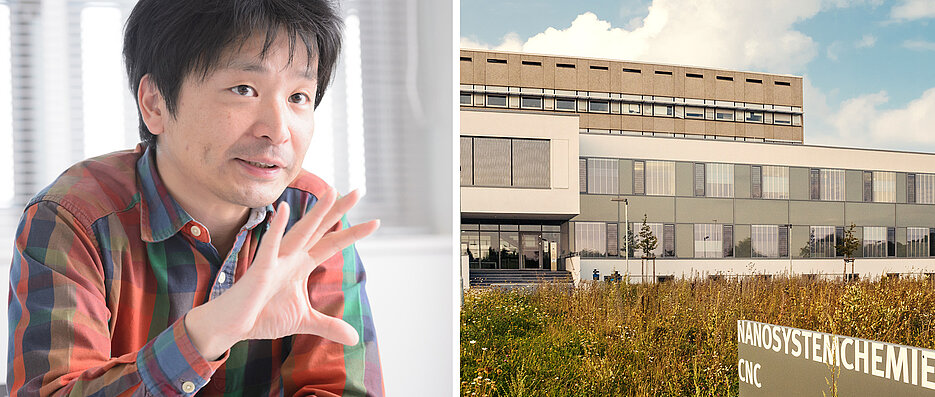A top-notch Chemist
10/01/2018He received a prestigious award from the Alexander von Humboldt Foundation. The renowned chemist, Kazunori Sugiyasu, will now join the University of Würzburg to do research with Professor Frank Würthner.

Each year, the Alexander von Humboldt Foundation grants about 20 Friedrich Wilhelm Bessel Research Awards to honour scientists and scholars of still younger age (41 in case of Dr. Sugiyasu) from abroad who accomplished already international visibility in their field. The award winners are invited to conduct research projects of their choice in cooperation with colleagues at a German research institution.
Kazunori Sugiyasu from Japan, who won such an award, will join Julius-Maximilians-Universität Würzburg (JMU) in Bavaria, Germany, at the beginning of October 2018. He will be working with Professor Frank Würthner for several months at the Center for Nanosystems Chemistry to establish a long-term collaborative partnership.
Research in nanosystems chemistry
The Center for Nanosystems Chemistry, led by Frank Würthner, works among others on arranging organic dye molecules into larger supramolecular assemblies. These nanostructures absorb sunlight with high efficiency and are currently exploited to boost the performance of organic electronics and photovoltaic devices.
Another goal of Würthner's research is the development of artificial chloroplasts that use light energy to create fuels similar to plants. Artificial photosynthesis could help reduce the amount of carbon dioxide in the atmosphere and produce energy-rich raw materials such as sugar, starch and methane gas.
Achievements of the Bessel award winner
The Würzburg research profile is excellently complemented by the expertise of Kazunori Sugiyasu. Sugiyasu works at the National Institute for Materials Science in Tsukuba (Japan) where he made major contributions to the chemistry of conjugated and supramolecular polymers at the Research Center for Functional Materials together with Professor Masayuki Takeuchi.
"Dr. Sugiyasu has a record of about 50 publications most of which were published in leading chemistry journals," Würthner wrote in his nomination. "His outstanding achievement is that he made a major scientific breakthrough already in the first project he was responsible for." The Japanese researcher had described a "living" supramolecular polymerisation (Nature Chemistry, 2014) for the first time. Among others, this has paved the way to build much better defined supramolecular polymers.
In-depth mechanistic analyses followed, some of which were already carried out in cooperation with JMU researchers, and a first example of light-regulated supramolecular polymerisation. In 2017, Dr. Sugiyasu described another big step from controlled one-dimensional growth to a living supramolecular polymerisation of two-dimensional layered structures in Nature Chemistry.
"With these contributions, Dr. Sugiyasu was able to provide an important stimulus to advance the field of supramolecular polymers," Würthner further. He also believes that the work of the Japanese researcher will stimulate other disciplines in supramolecular chemistry.
Details on the planned cooperation
Dr. Sugiyasu will do research at JMU for a period of six months. He will participate in projects run by Professor Würthner at the "Key Lab for Supramolecular Polymers" of the Bavarian Polymer Institute.
Simply put, the goal is to link two supramolecular chemical systems: It is planned to combine the perylene bisimide dyes studied by Würthner, which self-organize through hydrogen bonds, with the zinc porphyrins researched by Sugiyasu to create supramolecular block copolymers.
Both systems share a lot of similarities and should be highly compatible. Moreover, they complement each other from the functional point of view: "Perylene bisimides are electron-poor, zinc porphyrins are electron-rich," Würthner explains. Combining the two systems is therefore expected to yield very interesting supramolecular block copolymer architectures that can be used to study the light-induced separation of charge carriers as it takes place in solar cells.
Contact
Prof. Dr. Frank Würthner, Center for Nanosystems Chemistry, University of Würzburg, T +49 931 31-84756, wuerthner@uni-wuerzburg.de






